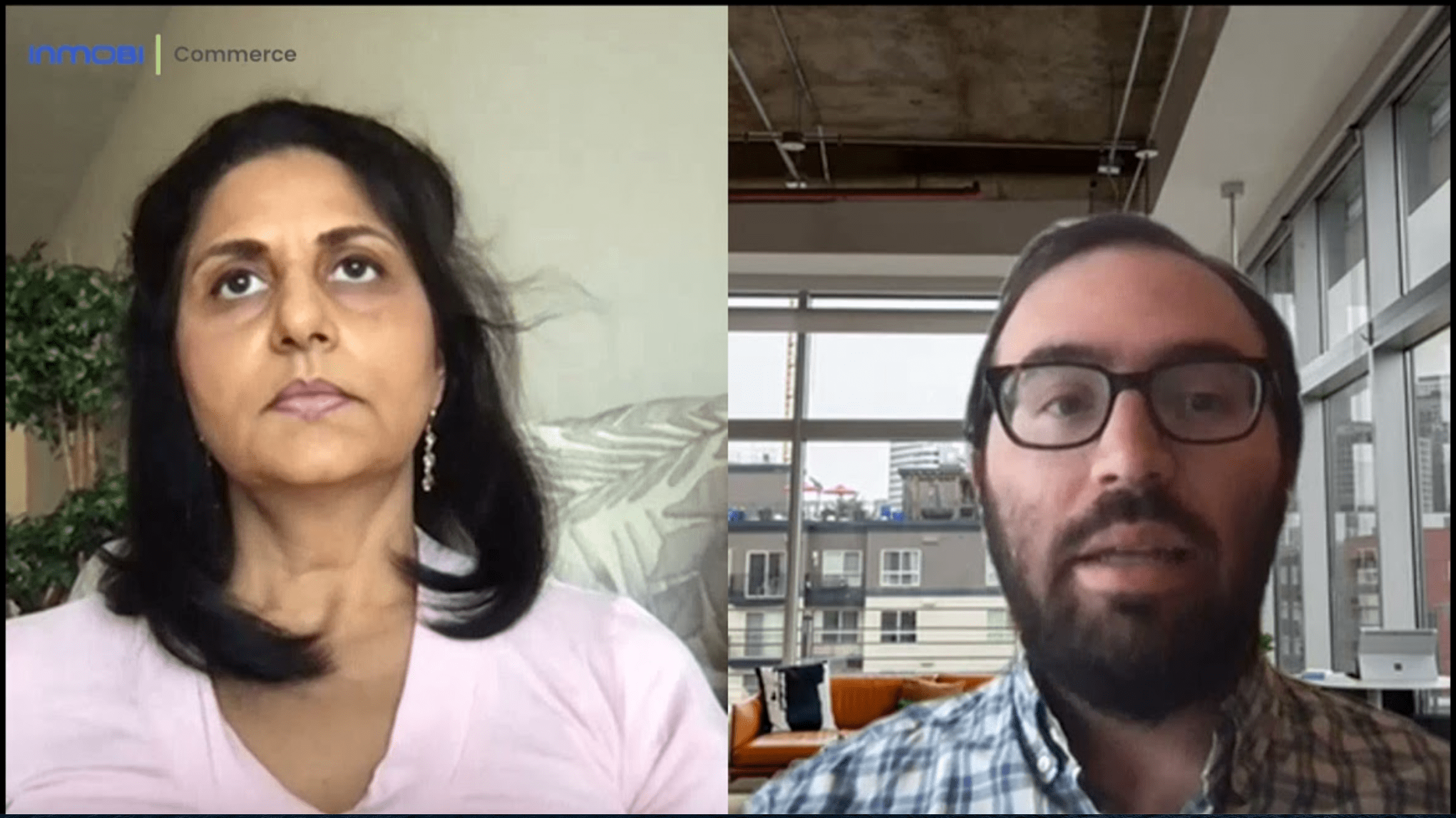Fuel campaign performance with laser-focused targeting

The goal of InMobi Commerce is to provide retailers and brands with all the tools they need to thrive in today’s retail media ecosystem. That includes talking with industry experts about emerging trends in retail media, tips on how brands and retailers can more successfully work together and more.
In this edition of “Take Five”, Matthew Kaplan, Content Marketing Manager at InMobi, sat down with Ranjana Choudhry, Vice President, Advertising and Social Media at Wakefern, to discuss the rise of retail media and how brands and retailers should capitalize on this growing channel.
Ranjana Choudhry is Vice President – Advertising & Social Media, at Wakefern Food Corp (which at $19 billion is the largest retail co-op in the U.S.). She is leading the development of marketing and digital content strategies that harness the brands’ iconic promotions builds new campaigns across advertising and digital channels.
Ranjana has more than 25 years' experience as a global marketing and communications leader. She is also an adjunct professor at NYU SPS, teaching integrated marketing and digital strategy to the next generation of marketers.
Ranjana Choudhry: I think the biggest reason for the growth of retail media is the fact that first-party data has become even more important than it was in the past when the third-party data could give you some level of insight into consumer behaviors.
Retail data is very deep, very accurate and more importantly, it has accumulated over a long period of time. Therefore, segmentation and building true insights about people’s habits is much more accurate with retail data. More and more brands are flocking to retail media because not only is the data accurate, but then it’s very actionable because you’re now activating right where consumers are shopping. You’ve got the insight and you immediately get into the action.
Another reason retail media is growing in popularity is the ability to link your media activation to real return on ad spends because you can actually watch where that customer is going. Are they shopping online? Are they going into the store? How much is that shopper buying that product? And repeat all that. So that complete end-to-end reporting is pretty brilliant, and I think everybody is recognizing that.
“If there’s one place a customer truly wants to interact with a brand, it is in the retail environment.”
One of the biggest things a retailer can do to make their media platform more appealing is to remove unnecessary intermediaries. It can get really complicated for an advertiser to try and coordinate with multiple people on the retail side, so if the retail media platform can be automated it will just make life easier.
I think something retailers struggle with when trying to scale is really demonstrating the benefit of their media platform to advertisers. So, I always recommend finding partners that are willing to invest with trust and are open to testing and learning along with you.
Then, once you’ve built some case studies, you have to work with multiple agencies (because every CPG usually works with some agency for media buying and planning) to try and get others to understand the implication of spending on your retail media platform.
“Retailers: find advertising partners who are willing to invest with their trust and are open to testing and learning along with you.”
When we think about the customer experience, it’s important to remember that the customer is the same for both the brand and the retailer. It would be very beneficial if everyone could pool their resources from an insight and data perspective. The more data touchpoints we have to understand what a shopper wants, the better. For example, there’s a depth of data that the CPG manufacturers have about the consumer, and there’s a whole depth of habitual data that the retailer has. The more we overlay that data, the sharper our targeting and the sharper our consumer profiling would be. So that is a huge place where we can collaborate.
On your second question, I would say is there has to be a bit of a seamlessness in the way retail ad dollars are placed. Because if you try and bucket the expense like: “This is what I’m going to invest in in-store media, this is what I’m going to put on off-platform and this is what I’m spending on-site" that’s where things get a little sticky.
Ideally, the advertiser should just focus on where the customer is, and where more dollars would actually improve their experience — It should be a little bit more fluid. And this would likely vary from brand to brand, but that’s what I would say is one of the biggest ways in which we can create a better experience together.
I only see a positive here because the data that we’re gathering is becoming bigger and better, especially with the growth of online shopping that’s happening. From that perspective, and the fact that the third-party cookie is crumbling pretty fast, it’ll become more and more important to actually be at a place where the data you’re using is truly clean, reliable and, most importantly, where you have permission from the customer to reach them.
If there’s one place a customer truly wants to interact with a brand, it is in the retail environment. So instead of wasting money by bombarding broadcast and spending it across all other media, it makes more sense to invest in retail media because you’re reaching precisely the person with precisely the ad unit they want with precisely the offer they need, which will lead to better conversions.
To hear more from Ranjana, check out her full interview here. If you’d like to provide your expert opinion for our next Take Five interview, contact us today!


Register to our blog updates newsletter to receive the latest content in your inbox.